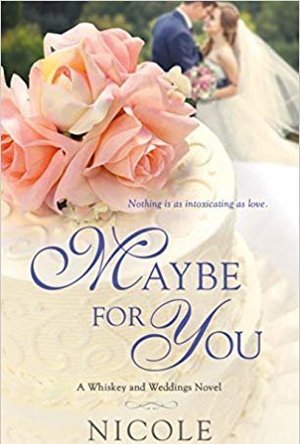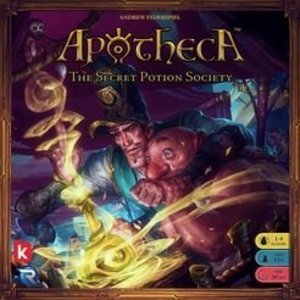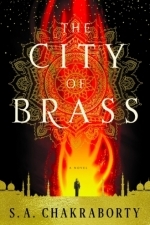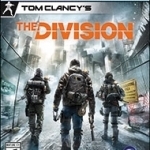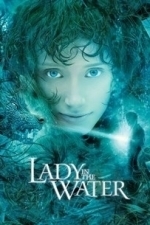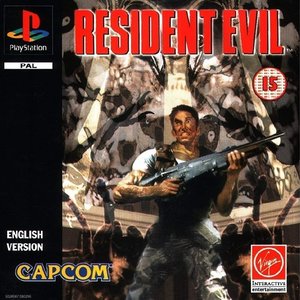Search
Search results
Sassy Brit (97 KP) rated Maybe For You in Books
Jun 5, 2019
Maybe For You by Nicole McLaughlin is a very emotional storyline. The theme allows readers to understand how to cope with loss and handle grief. It is also a friends to lover’s story.
Many say that a guy and gal cannot be friends. This story seems to prove that point. The different dynamic relationships play a part in how people react to each other. Friends usually are able to be direct and let their guards down without having to build walls. Usually these relationships are based on honesty where each person can show their true selves. Some of the best intimate relationships start off as friends. The heroine, Alexis, and the hero, Jake began their friendship as pen pals while she was deployed in Italy. They did not literally converse with a writing object, but used the modern way, a phone text. McLaughlin wanted “it to be a safer way to share feelings without being face to face or voice to voice. These two are able to share only when they feel like sharing.”
Alexis is not used to displaying her emotions, keeping everything close to the chest. Her parents died in an auto accident, she was raised by her older brother Dean, and now has lost her fiancé in a military helicopter accident. Anyone who has lost a loved one, especially when it is unexpected, can relate to this powerful quote, “Several times she had to talk herself out of just crawling back into bed… Moving on, healing, required putting one foot in front of the other. Even when it felt impossible.”
The story poignantly shows how those grieving can move on, that time heals. Yet, there are also instances when something can spur someone’s memory about a loved one, and that feeling of being hit in the gut returns. “I wanted to write about this because I experience it. I put in the book how sometimes the weight of the pain feels brand new. I lost my father when I was ten. I watched my mother and how she dealt with losing a partner. I think I put my own feelings in these scenes. My dad has been dead almost twenty-five years and every once in awhile a thought pops up in my head and I cry instantly. I think the grieving process is a long journey.”
But it is also a story of hope. After a year serving overseas Alexis returns to her home town in Kansas. Her brother offers her a job at the Stag Distillery he owns with two friends. But it also ended up becoming one of the most successful wedding and event venues in the Kansas City metro area. To promote their business one of the partners, Jake, travels on the road to find new clients. Realizing that Alex would be a good addition for making sells, it is decided that she will travel with him. Ready for a new challenge, Alexis agrees to accompany her new co-worker, Jake. Soon the casual relationship becomes intense where both realize they have strong feelings for each other.
“I wrote how their relationship was grounded in respect and friendship. Both needed someone that they cared for. They were able to tease and joke with each other, feeling very comfortable, because they started out as friends. They appear as opposites since Alexis is a survivor, strong, broken, vulnerable, determined, desperate for a family, and is very guarded. Jake is a player, a playboy, who always feels second best. As Alexis opens up to him about her feelings he listens, doesn’t pry or lecture about what she should be feeling. Slowly he transitions from a playboy to a partner.”
This is a very emotional story that will tug at the heart. There are many touching scenes with very likeable characters.
Many say that a guy and gal cannot be friends. This story seems to prove that point. The different dynamic relationships play a part in how people react to each other. Friends usually are able to be direct and let their guards down without having to build walls. Usually these relationships are based on honesty where each person can show their true selves. Some of the best intimate relationships start off as friends. The heroine, Alexis, and the hero, Jake began their friendship as pen pals while she was deployed in Italy. They did not literally converse with a writing object, but used the modern way, a phone text. McLaughlin wanted “it to be a safer way to share feelings without being face to face or voice to voice. These two are able to share only when they feel like sharing.”
Alexis is not used to displaying her emotions, keeping everything close to the chest. Her parents died in an auto accident, she was raised by her older brother Dean, and now has lost her fiancé in a military helicopter accident. Anyone who has lost a loved one, especially when it is unexpected, can relate to this powerful quote, “Several times she had to talk herself out of just crawling back into bed… Moving on, healing, required putting one foot in front of the other. Even when it felt impossible.”
The story poignantly shows how those grieving can move on, that time heals. Yet, there are also instances when something can spur someone’s memory about a loved one, and that feeling of being hit in the gut returns. “I wanted to write about this because I experience it. I put in the book how sometimes the weight of the pain feels brand new. I lost my father when I was ten. I watched my mother and how she dealt with losing a partner. I think I put my own feelings in these scenes. My dad has been dead almost twenty-five years and every once in awhile a thought pops up in my head and I cry instantly. I think the grieving process is a long journey.”
But it is also a story of hope. After a year serving overseas Alexis returns to her home town in Kansas. Her brother offers her a job at the Stag Distillery he owns with two friends. But it also ended up becoming one of the most successful wedding and event venues in the Kansas City metro area. To promote their business one of the partners, Jake, travels on the road to find new clients. Realizing that Alex would be a good addition for making sells, it is decided that she will travel with him. Ready for a new challenge, Alexis agrees to accompany her new co-worker, Jake. Soon the casual relationship becomes intense where both realize they have strong feelings for each other.
“I wrote how their relationship was grounded in respect and friendship. Both needed someone that they cared for. They were able to tease and joke with each other, feeling very comfortable, because they started out as friends. They appear as opposites since Alexis is a survivor, strong, broken, vulnerable, determined, desperate for a family, and is very guarded. Jake is a player, a playboy, who always feels second best. As Alexis opens up to him about her feelings he listens, doesn’t pry or lecture about what she should be feeling. Slowly he transitions from a playboy to a partner.”
This is a very emotional story that will tug at the heart. There are many touching scenes with very likeable characters.
Purple Phoenix Games (2266 KP) rated Apotheca in Tabletop Games
Jun 12, 2019
In the fantasy world, Witches and Wizards get all the credit for magical feats. But if it weren’t for the proverbial ‘man behind the curtain,’ those feats wouldn’t be possible! Who am I talking about? Apothecaries, of course! Yes, maybe a Wizard single-handedly defeated a dragon, but only after drinking a healing potion to recover some strength. And maybe a Witch was able to sneak past some henchmen after drinking a potion of invisibility. The list goes on! The point is, apothecaries can do some cool magical stuff too. So keep crushing it out there, apothecaries – this game is for you!
After years of study, you have finally become a master apothecary, and making magic potions is your passion. You buy all of your ingredients in a secret marketplace with no problem until one day, you come across another apothecary trying to buy all of the same ingredients as you! Who does this person think they are?? Using your quick wit, and some sleight of hand, you manage to scatter the ingredients around the marketplace to hide them from your rival. Now all you’ve got to do is give them the slip so you can go pick up the ingredients. Be careful, though – you’re rival is as sly as you are, and is scouring the marketplace to find them first!
In Apotheca, players are racing to create three magic potions before their opponents do. To craft a magic potion, players must make a match of three potions of the same color in a row. Played on a 4×4 grid, potions are manipulated by apothecary powers from recruited apothecary cards in a manner similar to movement in chess, or better yet – Onitama. Complete three matches, and you win! As a whole, I could describe Apotheca as chess with a helping of tic-tac-toe.
One thing I really like about this game is that it’s a game of semi-hidden information. Some things are hidden and some things are not. You do know the apothecary power(s) your opponent has, but you don’t know the color of the potions they put into play. Based on how they use their powers to manipulate potions, both face-up and face-down, you must deduce their strategy and thwart their attempts at making a match! Of course, they are doing the exact same thing to you – only you know the color of potions you place, but your power is known to your opponent. It’s a unique game of deduction and deception that requires more strategy than meets the eye.
Apotheca can be played with 1-4 players, but I think the best player count is 2. In a 3-4 player game, it can be difficult to build a concrete strategy because the board can significantly change between your turns. In a 2-player game, the board changes as well, but not nearly as quickly since it is just a back-and-forth with turn order. Also, more players means more hidden information – it can be tedious trying to remember who performed what action and who has what powers as you try to deduce everyone’s strategy. I don’t mind Apotheca as a 3-4 player game, but I would certainly prefer to play it as a 2-player game.
As you can see by our individual ratings, we are a little split on this game. It requires a decent amount of strategy and deduction, which work well together in this game. Apotheca was one of the first games in my collection, and it’s one that will stay there. Overall, Purple Phoenix Games gives Apotheca a sneaky 12 / 18.
https://purplephoenixgames.wordpress.com/2019/02/01/apotheca-review/
After years of study, you have finally become a master apothecary, and making magic potions is your passion. You buy all of your ingredients in a secret marketplace with no problem until one day, you come across another apothecary trying to buy all of the same ingredients as you! Who does this person think they are?? Using your quick wit, and some sleight of hand, you manage to scatter the ingredients around the marketplace to hide them from your rival. Now all you’ve got to do is give them the slip so you can go pick up the ingredients. Be careful, though – you’re rival is as sly as you are, and is scouring the marketplace to find them first!
In Apotheca, players are racing to create three magic potions before their opponents do. To craft a magic potion, players must make a match of three potions of the same color in a row. Played on a 4×4 grid, potions are manipulated by apothecary powers from recruited apothecary cards in a manner similar to movement in chess, or better yet – Onitama. Complete three matches, and you win! As a whole, I could describe Apotheca as chess with a helping of tic-tac-toe.
One thing I really like about this game is that it’s a game of semi-hidden information. Some things are hidden and some things are not. You do know the apothecary power(s) your opponent has, but you don’t know the color of the potions they put into play. Based on how they use their powers to manipulate potions, both face-up and face-down, you must deduce their strategy and thwart their attempts at making a match! Of course, they are doing the exact same thing to you – only you know the color of potions you place, but your power is known to your opponent. It’s a unique game of deduction and deception that requires more strategy than meets the eye.
Apotheca can be played with 1-4 players, but I think the best player count is 2. In a 3-4 player game, it can be difficult to build a concrete strategy because the board can significantly change between your turns. In a 2-player game, the board changes as well, but not nearly as quickly since it is just a back-and-forth with turn order. Also, more players means more hidden information – it can be tedious trying to remember who performed what action and who has what powers as you try to deduce everyone’s strategy. I don’t mind Apotheca as a 3-4 player game, but I would certainly prefer to play it as a 2-player game.
As you can see by our individual ratings, we are a little split on this game. It requires a decent amount of strategy and deduction, which work well together in this game. Apotheca was one of the first games in my collection, and it’s one that will stay there. Overall, Purple Phoenix Games gives Apotheca a sneaky 12 / 18.
https://purplephoenixgames.wordpress.com/2019/02/01/apotheca-review/
Debbiereadsbook (1608 KP) rated Living on Air in Books
Mar 5, 2018
A Masterpiece by Ms Mac Nicol!
Independent reviewer for Archaeolibrarian, I was gifted my copy of this book.
There comes along, once in a rare while, a book that PUSHES you. It pushes you out of your comfort zone. It pushes your skill at writing a coherent review, but most of all, it PUSHES you to get into the mind of someone close you, that you hadn't been able to before.
And OMG this book PUSHED me! So if my review goes awry, it's because I can't get the right words out, okay??
Cary has his own coping methods to deal with a major childhood trauma. Except, he isn't dealing with it, not really, he just deals with the pain his coping method causes. And he is good at hiding what he is doing. Rhys comes to the circus to take pictures, that's all. Pictures to go in a book. But Cary has a powerful reaction to Rhys, and vice versa, and the circus folk are amusing watching Rhys PUSH Cary. But they both carry scars, physical and emotional, and when Cary decides to confront his, he PUSHES Rhys away.
Finding to so difficult to write this, I really am, without bawling my eyes out.
I'm not giving anything away by saying Cary self harms, and from the very first PAGE we get it. And getting into Cary's mindset when he does what he does, THAT is the hardest thing I found to read in this book. Someone VERY close to me used to do this, not to the extent that Cary does, but close. I could never get my head round the why she did this, it made no sense to me at all. And their trauma was totally different to Cary's but getting into Cary's mind as he descends into oblivion, made me understand a little bit better WHY she did this.
And trust me when I say this, the amount of attention to detail, and research gone into this book, is OUTSTANDING! Cary's trauma and coping methods, what happened after. Rhys' own trauma, while not as in depth as Cary's, is bad too. Cary on his silks, I could SEE him, you know?? It was just like being there! And now?? Now I want to see the guy who Ms Mac Nicol used as inspiration for Cary and his silks.
The scene where the title came to make complete and total sense?? I had to go sit out the back for a few minutes, because I really did cry at that!
I started to read this at work (don't tell anyone!) and I had to keep putting it down. I had to keep putting it down when a particular chapter was difficult, or too emotional and I was getting upset. Had I been at home, I have no doubt I would have bawled my way through and read the whole book in one go.
Or at least I would have tried to. Because this is not a fluffy romance, it is not an easy read and it's not even a Happily Ever After.
But what it is, is an outstanding piece of work that Susan Mac Nicol should call her Masterpiece of writing.
There is a little author's note on the blurb, I strongly suggest you heed it.
While Cary and Rhys don't get a full Happily Ever After, they do get a Happy For Now. Both guys have a lot of healing to do, individually and as a couple. I just hope Ms Mac Nicol will write them a Happily Ever After, and SOON!!!
I can't word how much, even though it is an emotionally gut wrenching read, how much I LOVED this book. You know what?? Brand new shelf on Goodreads, just for books like this. It's title?? Masterpieces.
5 stars, but only because I can't give it anymore!
**same worded review will appear elsewhere**
There comes along, once in a rare while, a book that PUSHES you. It pushes you out of your comfort zone. It pushes your skill at writing a coherent review, but most of all, it PUSHES you to get into the mind of someone close you, that you hadn't been able to before.
And OMG this book PUSHED me! So if my review goes awry, it's because I can't get the right words out, okay??
Cary has his own coping methods to deal with a major childhood trauma. Except, he isn't dealing with it, not really, he just deals with the pain his coping method causes. And he is good at hiding what he is doing. Rhys comes to the circus to take pictures, that's all. Pictures to go in a book. But Cary has a powerful reaction to Rhys, and vice versa, and the circus folk are amusing watching Rhys PUSH Cary. But they both carry scars, physical and emotional, and when Cary decides to confront his, he PUSHES Rhys away.
Finding to so difficult to write this, I really am, without bawling my eyes out.
I'm not giving anything away by saying Cary self harms, and from the very first PAGE we get it. And getting into Cary's mindset when he does what he does, THAT is the hardest thing I found to read in this book. Someone VERY close to me used to do this, not to the extent that Cary does, but close. I could never get my head round the why she did this, it made no sense to me at all. And their trauma was totally different to Cary's but getting into Cary's mind as he descends into oblivion, made me understand a little bit better WHY she did this.
And trust me when I say this, the amount of attention to detail, and research gone into this book, is OUTSTANDING! Cary's trauma and coping methods, what happened after. Rhys' own trauma, while not as in depth as Cary's, is bad too. Cary on his silks, I could SEE him, you know?? It was just like being there! And now?? Now I want to see the guy who Ms Mac Nicol used as inspiration for Cary and his silks.
The scene where the title came to make complete and total sense?? I had to go sit out the back for a few minutes, because I really did cry at that!
I started to read this at work (don't tell anyone!) and I had to keep putting it down. I had to keep putting it down when a particular chapter was difficult, or too emotional and I was getting upset. Had I been at home, I have no doubt I would have bawled my way through and read the whole book in one go.
Or at least I would have tried to. Because this is not a fluffy romance, it is not an easy read and it's not even a Happily Ever After.
But what it is, is an outstanding piece of work that Susan Mac Nicol should call her Masterpiece of writing.
There is a little author's note on the blurb, I strongly suggest you heed it.
While Cary and Rhys don't get a full Happily Ever After, they do get a Happy For Now. Both guys have a lot of healing to do, individually and as a couple. I just hope Ms Mac Nicol will write them a Happily Ever After, and SOON!!!
I can't word how much, even though it is an emotionally gut wrenching read, how much I LOVED this book. You know what?? Brand new shelf on Goodreads, just for books like this. It's title?? Masterpieces.
5 stars, but only because I can't give it anymore!
**same worded review will appear elsewhere**
Goddess in the Stacks (553 KP) rated The City of Brass: Daevabad Trilogy in Books
Mar 25, 2018
Fantastic world-building (1 more)
Character Development
So much to say about this outstanding debut novel! First I'd like to address the issues around the author, then I'll delve into the book itself. (It's fantastic, though!)
So the book has been touted as an "own voices" novel, seemingly much to the author's chagrin. She is Muslim, but she's a white convert (Chakraborty is her married name). She has striven to correct the misconception about her ethnicity when she finds it, tweeting about it and talking about it in interviews. (This interview is a good example.) Because the book is pure fantasy, in a fantasy realm after the first few chapters, I'm not too worried about it not actually being written by a middle-eastern author. She does note in the interview I linked that she's not qualified to write some stories because of her ethnicity, and I appreciate that recognition of privilege. As far as I can tell, (as a white person myself) she did justice to the bits of mythology that she included. (Given the reception by people who were so excited about it being an Own Voices book, I think I'm probably right.) Her twitter (@SChakrabs) is FULL of links to minority authors and retweets about their books. I am very impressed by the level of her advocacy for minority authors.
So that aside, I LOVED THIS BOOK. I almost always enjoy fantasy inspired by non-western mythology: Children of Blood and Bone was fantastic, and though Forest of a Thousand Lanterns had a western fairytale at its heart, being reimagined through an Asian lense was really neat to read. The Bear and The Nightingale and The Girl in the Tower were Russian inspired, as were The Crown's Game/The Crown's Fate. I really do try to pick up non-western inspired fantasy when I can. City of Brass scratched that itch perfectly.
City of Brass opens in Cairo, where our heroine, Nahri, is a con-woman with small healing magics. When a ritual goes awry, she's thrust into the world of the djinn. It's when Nahri and her accidental bodyguard, Dara, arrive at the Djinns' city of Daevabad that the story really gets started.
I'm still a little confused about the difference between djinn and Daeva; Daeva seem to be one of the tribes but also the name for the entire race, and some of them get offended at being called djinn but some of them don't? I'm not really sure about that distinction. There is a clear line between djinn and Ifrit, though - Ifrit are immensely powerful, immortal beings who refused to subject themselves to punishment many centuries ago. I'm not sure I actually see a downside to being Ifrit, other than the djinn all think they're evil. The Ifrit, however, are out to get Nahri, and Dara's not having any of THAT.
I love Dara - he's a fascinating character, with a violent, mysterious backstory. I'm very eager to read more about him and figure out exactly what's up with his background. Nahri is also awesome - a little arrogant, but by the end of the book she's starting to learn she might need help from those around her. Unfortunately, also by the end of the book she doesn't know who to trust. The naive djinn prince, Ali, is the third main character of the book, and while I can see him having an interesting story, his personality is still a little flat. Hopefully the second book will see advancement in all three of these characters' personalities.
And I can't WAIT for the second book! City of Brass didn't exactly end on a cliffhanger, but it did leave many questions unanswered and our main characters' fates uncertain. Unfortunately, I can't find any information on the sequel, just that it's being edited. No release date or title yet.
Read this book. It's fantastic.
You can find all my reviews at http://goddessinthestacks.wordpress.com
So the book has been touted as an "own voices" novel, seemingly much to the author's chagrin. She is Muslim, but she's a white convert (Chakraborty is her married name). She has striven to correct the misconception about her ethnicity when she finds it, tweeting about it and talking about it in interviews. (This interview is a good example.) Because the book is pure fantasy, in a fantasy realm after the first few chapters, I'm not too worried about it not actually being written by a middle-eastern author. She does note in the interview I linked that she's not qualified to write some stories because of her ethnicity, and I appreciate that recognition of privilege. As far as I can tell, (as a white person myself) she did justice to the bits of mythology that she included. (Given the reception by people who were so excited about it being an Own Voices book, I think I'm probably right.) Her twitter (@SChakrabs) is FULL of links to minority authors and retweets about their books. I am very impressed by the level of her advocacy for minority authors.
So that aside, I LOVED THIS BOOK. I almost always enjoy fantasy inspired by non-western mythology: Children of Blood and Bone was fantastic, and though Forest of a Thousand Lanterns had a western fairytale at its heart, being reimagined through an Asian lense was really neat to read. The Bear and The Nightingale and The Girl in the Tower were Russian inspired, as were The Crown's Game/The Crown's Fate. I really do try to pick up non-western inspired fantasy when I can. City of Brass scratched that itch perfectly.
City of Brass opens in Cairo, where our heroine, Nahri, is a con-woman with small healing magics. When a ritual goes awry, she's thrust into the world of the djinn. It's when Nahri and her accidental bodyguard, Dara, arrive at the Djinns' city of Daevabad that the story really gets started.
I'm still a little confused about the difference between djinn and Daeva; Daeva seem to be one of the tribes but also the name for the entire race, and some of them get offended at being called djinn but some of them don't? I'm not really sure about that distinction. There is a clear line between djinn and Ifrit, though - Ifrit are immensely powerful, immortal beings who refused to subject themselves to punishment many centuries ago. I'm not sure I actually see a downside to being Ifrit, other than the djinn all think they're evil. The Ifrit, however, are out to get Nahri, and Dara's not having any of THAT.
I love Dara - he's a fascinating character, with a violent, mysterious backstory. I'm very eager to read more about him and figure out exactly what's up with his background. Nahri is also awesome - a little arrogant, but by the end of the book she's starting to learn she might need help from those around her. Unfortunately, also by the end of the book she doesn't know who to trust. The naive djinn prince, Ali, is the third main character of the book, and while I can see him having an interesting story, his personality is still a little flat. Hopefully the second book will see advancement in all three of these characters' personalities.
And I can't WAIT for the second book! City of Brass didn't exactly end on a cliffhanger, but it did leave many questions unanswered and our main characters' fates uncertain. Unfortunately, I can't find any information on the sequel, just that it's being edited. No release date or title yet.
Read this book. It's fantastic.
You can find all my reviews at http://goddessinthestacks.wordpress.com
Gareth von Kallenbach (980 KP) rated the PlayStation 4 version of Tom Clancy's The Division in Video Games
Jun 19, 2019
As if pulled directly from the headlines Tom Clancy’s The Division is a chilling look at New York in the aftermath of a deadly pandemic. Dubbed the Dollar Flu, after tainted money was released during Black Friday, Manhattan is a desolated region populated by scavengers, roaming gangs; people just trying to survive. It is into this scenario that players take on the role of an agent of an elite government division known as “The Division”, their task is to help restore order, investigate the outbreak, and bring facilities and a sense of normality to a devastated area. Playing from a third person perspective and mixing elements of a RPG and shooter, The Division is an extremely ambitious and highly detailed project. Players are tasked with several main missions but also have the option to do side missions which help them gain resources in order to upgrade their base and equipment. Weapons and accessories can be bought, sold, or modified, and various skill options ranging from healing to combat options become available as well.
One of the great things about the game is the ability to join other players to complete your missions. At the start of a mission, players have the option to be matched up with other players but of course the difficulty will ramp up based on the number of players that are currently assigned. The level of difficulty can be extreme but the enjoyment rewards of successfully completing the mission of this magnitude are worth it.
There was a lot of complaining online from gamers about the delays that the game had coming to market and I would say that the time has definitely been well spent. It is a deeply immersive game that is very impressive to look at in terms of the detail that Ubisoft has put into re-creating the city. The enemies are diverse and challenging and the storyline is extremely engaging.
I am not a huge fan of micromanagement in terms of having to sort out my gear and tactful upgrades I’ve always been more in favor of finding and using an item rather than crafting and purchasing because I do not like to have to decide what is worth keeping and what is worth discarding or selling. The great thing is the game gives me the ability to play in my comfort zone but also step outside it and take some new paths to enhance my loadout.
There are unfortunately a few bugs in the game as I remember one early mission in a department store were encountering a flamethrower equipped enemy on a staircase I backed up and dispatched them with a volley from my assault rifle. My triumph was short-lived as I found that I become wedged between an ankle high box and a mannequin and that there was no way for me to get out of that predicament without ending the game and then reloading. I have not encountered any of the exploits that I read about being deployed online but I also avoid The Dark Zone more than other players as this is truly a lawless area were players run amok.
Ubisoft has said they plan to address the issues and they also have upcoming DLC which will expand upon the universe. For now The Division is a very impressive game in that it provides a fantastic an open world scenario filled with numerous challenges and a great level of visual detail. I found myself to of been drawn into the game and it is managed to maintain my interest ever since release and also has me thinking about the game and strategizing even when I’m not playing. Hopefully the necessary updates and features will continue to, so this game can reach its full potential.
http://sknr.net/2016/05/13/tom-clancys-division/
One of the great things about the game is the ability to join other players to complete your missions. At the start of a mission, players have the option to be matched up with other players but of course the difficulty will ramp up based on the number of players that are currently assigned. The level of difficulty can be extreme but the enjoyment rewards of successfully completing the mission of this magnitude are worth it.
There was a lot of complaining online from gamers about the delays that the game had coming to market and I would say that the time has definitely been well spent. It is a deeply immersive game that is very impressive to look at in terms of the detail that Ubisoft has put into re-creating the city. The enemies are diverse and challenging and the storyline is extremely engaging.
I am not a huge fan of micromanagement in terms of having to sort out my gear and tactful upgrades I’ve always been more in favor of finding and using an item rather than crafting and purchasing because I do not like to have to decide what is worth keeping and what is worth discarding or selling. The great thing is the game gives me the ability to play in my comfort zone but also step outside it and take some new paths to enhance my loadout.
There are unfortunately a few bugs in the game as I remember one early mission in a department store were encountering a flamethrower equipped enemy on a staircase I backed up and dispatched them with a volley from my assault rifle. My triumph was short-lived as I found that I become wedged between an ankle high box and a mannequin and that there was no way for me to get out of that predicament without ending the game and then reloading. I have not encountered any of the exploits that I read about being deployed online but I also avoid The Dark Zone more than other players as this is truly a lawless area were players run amok.
Ubisoft has said they plan to address the issues and they also have upcoming DLC which will expand upon the universe. For now The Division is a very impressive game in that it provides a fantastic an open world scenario filled with numerous challenges and a great level of visual detail. I found myself to of been drawn into the game and it is managed to maintain my interest ever since release and also has me thinking about the game and strategizing even when I’m not playing. Hopefully the necessary updates and features will continue to, so this game can reach its full potential.
http://sknr.net/2016/05/13/tom-clancys-division/
Gareth von Kallenbach (980 KP) rated Lady in the Water (2006) in Movies
Aug 14, 2019
M. Night Shyamalan has crafted a true modern day Fairy Tale with his surprisingly delightful film Lady in the Water.
The film stars Paul Giamatti as Cleveland Heep, a property manager at a Philadelphia apartment complex known as “The Cove”. Cleveland spends his days maintaining the complex as well as interacting with the guests who reside there.
Cleveland is a very unassuming man who has a stutter that often causes him embarrassment when he is trying to hold a conversation. Life is busy but not very social for Cleveland who spends the majority of his free time in his apartment alone, and seems to have no social connections beyond his tenants.
All this changes when he discovers a young woman swimming in the pool after hours Cleveland is concerned what the tenants might think, but takes the young lady into his apartment as he suspects that she may be in trouble.
The lady is names Story (Bryce Dallas Howard), and she seems to possess an almost innocent naivety about her that belies her gentle nature. When Cleveland attempts to take the sleeping Story outside to rest on a lawn chair, he is confronted by a creature whose very nature exudes menace and danger which forces the duo to make a hasty retreat into his apartment.
Cleveland learns in time, that Story is a being from a fable that is here to contact an important figure in order to inspire them. Such inspiration is said to be a catalyst for events that will improve the future for mankind.
Naturally there are evil forces that wish to stop her from doing this and will take any opportunity they can to harm the frail Story and keep her from completing her task and returning home. This is a shock to Story, who thought she has completed her mission, and as such, under rules established by her people and the evil powers, is exempt from attacks and allowed to return home once a task has been completed. When this is not the case, and story is attacked as she prepares for her magical return, Cleveland draws upon the compassion of fellow tenants to protect Story.
Cleveland learns from a Korean tenant and her daughter about a legend that seems to underscore Story and her mission, and becomes eager to know more about the legend all the while keeping Story a secret as well as out of harms way.
In time it is learned what her true mission is and that a series of people are required in order to fully protect Story from the evil and allow her to accomplish what she is there to do, which in turn allows Story to connect with them and help many of them address the fears and concerns that they have thus inspiring and healing them with her magical abilities.
With a deadline rapidly approaching, Cleveland and the tenants must band together in order to help story complete her mission, and to determine which role each of them is supposed to play in order to keep her from harm and return her to her people.
While the film does have some scary moments, it is at its very core a fantasy film. The performances of Howard and Giamatti are strong and underscore that both are talents on the rise with bright futures ahead of them.
Shyamalan keeps the film moving at a nice pace that results in a tight film that does not drag on unnecessarily. Shyamalan is also plays a key part in the film and does solid work in front of the camera as well as behind it.
While the film may have a few plot holes and at times requires leaps of faith from the audience, it is a very warm film that blends humor and drama to create a very effective and enjoyable film.
The film stars Paul Giamatti as Cleveland Heep, a property manager at a Philadelphia apartment complex known as “The Cove”. Cleveland spends his days maintaining the complex as well as interacting with the guests who reside there.
Cleveland is a very unassuming man who has a stutter that often causes him embarrassment when he is trying to hold a conversation. Life is busy but not very social for Cleveland who spends the majority of his free time in his apartment alone, and seems to have no social connections beyond his tenants.
All this changes when he discovers a young woman swimming in the pool after hours Cleveland is concerned what the tenants might think, but takes the young lady into his apartment as he suspects that she may be in trouble.
The lady is names Story (Bryce Dallas Howard), and she seems to possess an almost innocent naivety about her that belies her gentle nature. When Cleveland attempts to take the sleeping Story outside to rest on a lawn chair, he is confronted by a creature whose very nature exudes menace and danger which forces the duo to make a hasty retreat into his apartment.
Cleveland learns in time, that Story is a being from a fable that is here to contact an important figure in order to inspire them. Such inspiration is said to be a catalyst for events that will improve the future for mankind.
Naturally there are evil forces that wish to stop her from doing this and will take any opportunity they can to harm the frail Story and keep her from completing her task and returning home. This is a shock to Story, who thought she has completed her mission, and as such, under rules established by her people and the evil powers, is exempt from attacks and allowed to return home once a task has been completed. When this is not the case, and story is attacked as she prepares for her magical return, Cleveland draws upon the compassion of fellow tenants to protect Story.
Cleveland learns from a Korean tenant and her daughter about a legend that seems to underscore Story and her mission, and becomes eager to know more about the legend all the while keeping Story a secret as well as out of harms way.
In time it is learned what her true mission is and that a series of people are required in order to fully protect Story from the evil and allow her to accomplish what she is there to do, which in turn allows Story to connect with them and help many of them address the fears and concerns that they have thus inspiring and healing them with her magical abilities.
With a deadline rapidly approaching, Cleveland and the tenants must band together in order to help story complete her mission, and to determine which role each of them is supposed to play in order to keep her from harm and return her to her people.
While the film does have some scary moments, it is at its very core a fantasy film. The performances of Howard and Giamatti are strong and underscore that both are talents on the rise with bright futures ahead of them.
Shyamalan keeps the film moving at a nice pace that results in a tight film that does not drag on unnecessarily. Shyamalan is also plays a key part in the film and does solid work in front of the camera as well as behind it.
While the film may have a few plot holes and at times requires leaps of faith from the audience, it is a very warm film that blends humor and drama to create a very effective and enjoyable film.

iFind Khuyến mãi Giảm giá Deal
Shopping and Food & Drink
App
iFind - Tìm nhanh Ưu Đãi iFind là ứng dụng di động tiện ích và thông minh giúp...
Matthew Krueger (10051 KP) rated the PlayStation version of Resident Evil in Video Games
Jun 27, 2020 (Updated Jun 27, 2020)
The Atmosphere (2 more)
The Horror
The depending on what you need or think that's important.
The Infested Mansion
Resident Evil- like Silent Hill, the atmosphere of a the horror genre is excellent. Resident Evil ask you the question, if you and your team got stranded and the only place to go is a old creepy manison and survive it, can you do it?. The answer for me, no! But for Chris and Jill their have to, no other choice. Thats what i love about Resident Evil, is the atmosphere of the manison, the creepest, the mystery, the suspense, the thrills and the creatures that live inside of it.
The plot: Chris Redfield and Jill Valentine, are members of an elite task force known as S.T.A.R.S., as they investigate the outskirts of Raccoon City following the disappearance of their team members. They soon become trapped in a mansion infested with zombies and other monsters. The player, having selected to play as Chris or Jill at the start of the game, must explore the mansion to uncover its secrets.
Gameplay: The player's character is a member of a special law enforcement task force who is trapped in a mansion populated by dangerous mutated creatures. The objective of the game is to uncover the mystery of the mansion and ultimately escape alive.
To fulfill the game's objective, the player uncovers various documents that provide exposition about the game's narrative, as well as clues that help them solve various puzzles within the mansion. Key items are also available that give the player access to other items or new areas. The player can arm their character with weapons to defend themselves from enemies, although the ammunition available for each firearm is limited and the player must learn to conserve the ammunition they have for situations where they will really need it
The carrying capacity of the player is limited depending on the character and items that the player does not wish to carry at the moment can be stored into an item box to be retrieved for later use. To save their progress, the player must pick up an ink ribbon and use it on any of the typewriters scattered through key locations in the game. However, the supply of ink ribbons the player can acquire is limited much like the player's ammo and healing supplies. Players will encounter and fight various infected creatures as flesh-eating zombies, undead dogs, giant spiders, and other monsters.
Resident Evil was very well received critically and commercially, and is often credited for defining the survival horror genre. Beyond video games, Resident Evil has been credited with re-popularising zombies in mainstream popular culture from the late 1990s onwards (along with The House of the Dead), leading to a renewed interest in zombie films during the 2000s. Resident Evil has since been hailed as one of the most influential and greatest video games of all time. Its success has spawned a multimedia franchise including video games, films, comics, novels, and other merchandise. The game has received dedicated ports to the Sega Saturn, Windows, and Nintendo DS. In 2002, a remake of the same name was released for the GameCube featuring updated graphics, sound, and changes to the gameplay and story. A high-definition remaster of the GameCube game was released in 2015 for modern platforms.
Resident Evil- is one of my favorite survivor horror games of all time and one of my favorite games of all times. Its intense, thrilling, suspenseful and overall scary. Resident Evil is a must to play, if you haven't already. Will you survivie the manison or not!
The plot: Chris Redfield and Jill Valentine, are members of an elite task force known as S.T.A.R.S., as they investigate the outskirts of Raccoon City following the disappearance of their team members. They soon become trapped in a mansion infested with zombies and other monsters. The player, having selected to play as Chris or Jill at the start of the game, must explore the mansion to uncover its secrets.
Gameplay: The player's character is a member of a special law enforcement task force who is trapped in a mansion populated by dangerous mutated creatures. The objective of the game is to uncover the mystery of the mansion and ultimately escape alive.
To fulfill the game's objective, the player uncovers various documents that provide exposition about the game's narrative, as well as clues that help them solve various puzzles within the mansion. Key items are also available that give the player access to other items or new areas. The player can arm their character with weapons to defend themselves from enemies, although the ammunition available for each firearm is limited and the player must learn to conserve the ammunition they have for situations where they will really need it
The carrying capacity of the player is limited depending on the character and items that the player does not wish to carry at the moment can be stored into an item box to be retrieved for later use. To save their progress, the player must pick up an ink ribbon and use it on any of the typewriters scattered through key locations in the game. However, the supply of ink ribbons the player can acquire is limited much like the player's ammo and healing supplies. Players will encounter and fight various infected creatures as flesh-eating zombies, undead dogs, giant spiders, and other monsters.
Resident Evil was very well received critically and commercially, and is often credited for defining the survival horror genre. Beyond video games, Resident Evil has been credited with re-popularising zombies in mainstream popular culture from the late 1990s onwards (along with The House of the Dead), leading to a renewed interest in zombie films during the 2000s. Resident Evil has since been hailed as one of the most influential and greatest video games of all time. Its success has spawned a multimedia franchise including video games, films, comics, novels, and other merchandise. The game has received dedicated ports to the Sega Saturn, Windows, and Nintendo DS. In 2002, a remake of the same name was released for the GameCube featuring updated graphics, sound, and changes to the gameplay and story. A high-definition remaster of the GameCube game was released in 2015 for modern platforms.
Resident Evil- is one of my favorite survivor horror games of all time and one of my favorite games of all times. Its intense, thrilling, suspenseful and overall scary. Resident Evil is a must to play, if you haven't already. Will you survivie the manison or not!

Vital-EQ Respiroguide Pro
Health & Fitness
App
RESPIROGUIDE PRO: THE NEWEST VERSION, MORE PERSONAL “Simple and amazingly effective for better...

Yoga International
Health & Fitness and Magazines & Newspapers
App
Yoga classes & much more. Yoga International is your ultimate destination for yoga classes,...
